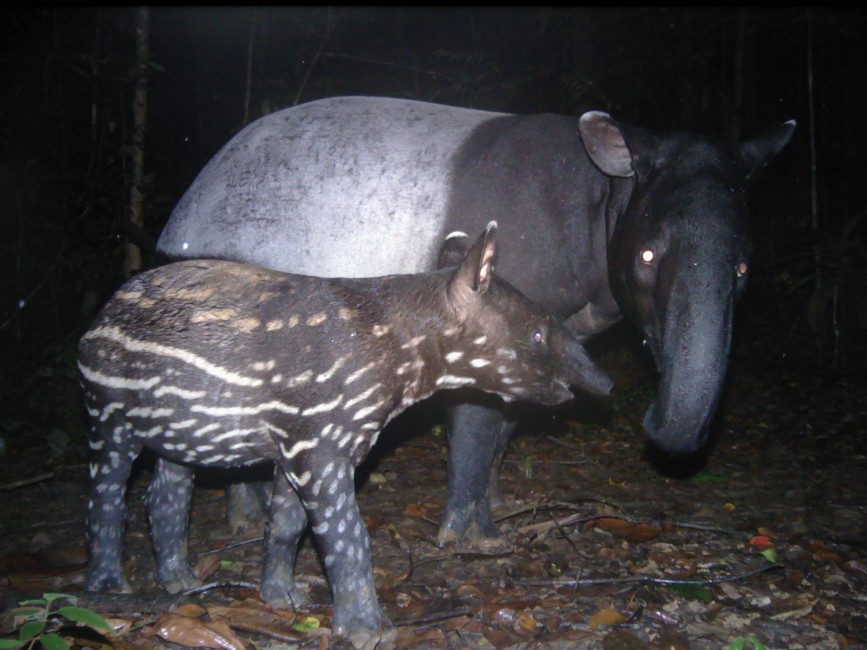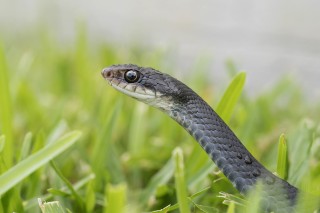
September 7, 2018
It is Black and White? Part 1
- as seen by -
 Melvin Gumal
Melvin Gumal
Over 94,000 images of Malayan tapirs have been recorded by camera traps in the Malaysian states of Johor and Pahang where WCS Malaysia worked from 2009–2017. This makes tapirs the fourth most photographed-by-camera trap animal in the landscape. About 100 of these photos included young tapirs. To date, only four tapir carcasses have been observed from these images since anti-poaching enforcement work began in the landscape in 2010.
At maturity, tapirs can grow to a little over three feet at shoulder height, have a head-and-body length of about eight feet and weigh up to 775 pounds. Some Asian communities perceive the tapir as an enigma as it has the nose of an elephant, the footprint of a rhino, and the rump of a horse. The question many Asians ask is whether the tapir is a black animal with a large white band across its body, or a white animal with a black head, shoulders, and rump. Adding to this odd mix, tapirs also have young that are initially white-striped (above). These stripes disappear and morph into the familiar white band across their back after several months.
As tapirs are neither a distinctively large size nor in possession of well-developed canine teeth, they have largely been overlooked by many biologists. Because they are not perceived to be iconic, the death of tapirs also does not appear to attract much attention among the public.
However, these secretive animals are increasingly under threat from the proliferation of roads into Peninsular Malaysia’s rural areas, and they are victims of roadkills.
EDITOR’S NOTE: Read Part 2 here.




Leave a Comment